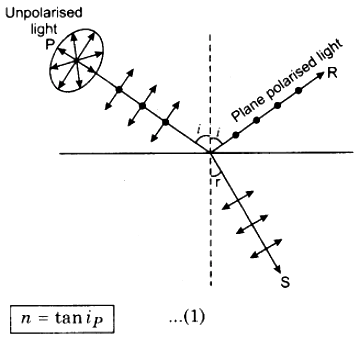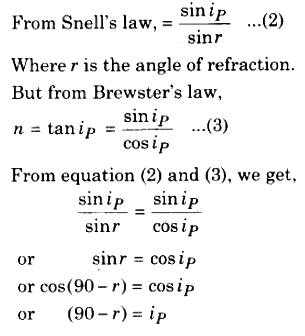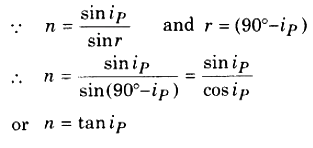Production of Plane Polarised Light:
(1) Polarisation by Reflection: French engineer Malus invented in 1808, when ordinary light is reflected by surface of transparent medium (e.g., glass), it becomes partly plane polarised. In 1811, scientist ‘Brewster’ studied this event in detail and concluded and told that the quantity of polarised light in reflected light depends on the angle of incidence. On changing the angle of incidence, a certain angle of incidence is obtained for which the reflected light is completely plane polarised. This particular angle is known as the ‘angle of polarisation’ or ‘Brewster’* angle’ and it is denoted by ip. This angle is certain for a particular medium and different for different media. For water its value is about 53° and for glass it is 57°. If the refractive index of transparent medium be n, then according to brewster n and ip will be related as

This formula is known as ‘Brewster’* law’.
When the light is incident at this angle, the reflected and refracted rays are at right angles to each other.
This fact can be proved as under:

or ip + r = 90° …………. (4)
From figure 12.33, ip + θ + r = 180°
or θ + 90° = 180°
or θ = 180° – 90° = 90°
or θ=90° ………… (5)
Clearly, reflected and refracted rays are at right angles to each other.
If it is given that ip + r = 90°
Then relation between ip and n will be established as under:

This very relation is Brewster’* law.